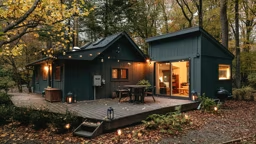- When displaying the U.S. flag, display it only during daylight hours from sunrise to sunset. You can display it 24 hours a day, however, if you properly illuminate it in the dark.
- Don't display the flag on foul-weather days.
- Don't let the flag touch anything beneath it, such as the ground, floor or water.
- A 3x5-foot flag should be flown on a 15- to 20-foot flagpole. Use a 25-foot flagpole for flags 4x6 feet or larger.
- When you fold the flag, first fold it twice in half, width-wise. Starting at the striped end, fold it in a triangle until only the end of the union remains; fold this end into a triangle and tuck it in.
- When displayed either horizontally or vertically against a wall, the union should be uppermost and to the flag's own right; that is, to the observer's left. When displayed in a window, the flag should face outside in the same way, with the union to the viewer's left.
- The flag, when flown at half-staff, should be first hoisted to the peak for an instant and then lowered to the half-staff position. The flag should be again raised to the peak before it is lowered for the day.
- The flag should not be draped over the hood, top, sides or back of a vehicle, railroad train or boat. When the flag is displayed on a motorcar, the staff should be fixed firmly to the chassis or clamped to the right fender.
- When your flag is "no longer a fitting emblem for display," dispose of it in a dignified way – usually by burning. If you burn the flag yourself, make sure it is done in a discreet and professional manner.*
* Many organizations like the American Legion, the Boy Scouts Council and the Girl Scouts Council will perform a flag retirement ceremony and burn your flag for you. In this case, the burning of the flag signifies purification and rebirth. For more information, click here.











